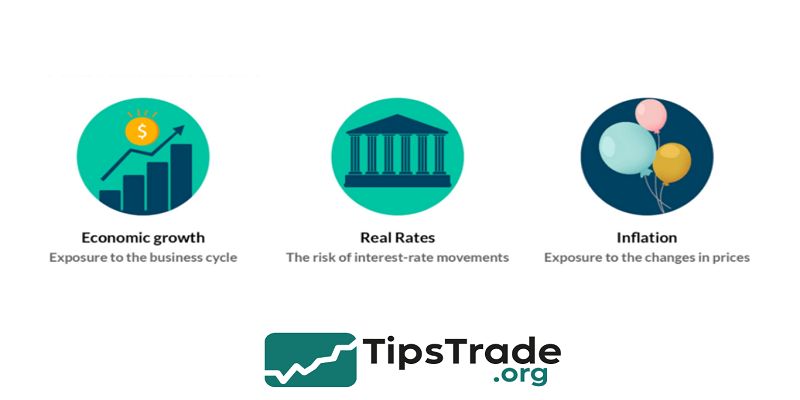Factors affecting stock prices are influenced by a wide range of elements that shape the fluctuations in the market value of shares. These factors include a company’s financial performance, economic indicators, market supply and demand, investor psychology, geopolitical events, and external shocks. Stock prices rise or fall based on the balance between supply and demand and are also affected by market sentiment, which can lead to volatility. Understanding these variables is crucial for investors to make informed decisions and anticipate market trends. Explore all the information at Tipstrade.org — detailed article waiting for you below
Factors Affecting Stock Prices
Company Performance and Earnings Growth
- At the core of every stock’s value lies the company’s financial performance.
- Firms that report strong earnings growth, stable revenue streams, and expanding profit margins often see their share prices rise.
- For example, Apple’s consistent revenue growth and innovation pipeline have historically supported its long-term share appreciation.
- Investors focus heavily on quarterly earnings reports, which include metrics like EPS (Earnings Per Share) and revenue growth rate.
- Positive earnings surprises typically trigger immediate price rallies, while disappointments can lead to sharp sell-offs.
- According to a 2024 study by Morningstar, over 70% of short-term stock price volatility around earnings season is tied directly to earnings announcements and forward guidance.
Financial Ratios and Valuation Metrics
Another crucial factor is how the market values a company’s fundamentals. Ratios like P/E (Price-to-Earnings), P/B (Price-to-Book), and ROE (Return on Equity) help investors compare valuation and profitability.
For instance:
- A high P/E ratio may suggest overvaluation — or simply strong future growth expectations.
- A low P/E could indicate undervaluation or declining fundamentals.
- A healthy ROE signals efficient use of shareholder capital.
- Analysts often benchmark these ratios against industry averages.
- The valuation multiples of tech companies, for example, tend to be much higher than utilities or manufacturing firms, reflecting different risk and growth profiles.
- Understanding this context prevents investors from misinterpreting raw numbers.
Dividend Policy and Cash Flow Stability
- Dividend-paying companies tend to exhibit lower volatility and more investor loyalty. A stable or growing dividend indicates financial health and confidence in future earnings.
- Conversely, dividend cuts often cause share prices to fall sharply.
- Investors also analyze free cash flow (FCF) — the actual cash available after operational expenses and capital investments.
- A strong FCF supports both dividends and share buybacks, which directly enhance shareholder value.
- For example, Procter & Gamble’s consistent dividend increases for over 60 years have cemented its reputation as a reliable income stock.
Corporate Governance and Management Quality
- Beyond numbers, leadership quality and governance standards significantly affect investor confidence.
- Firms with transparent financial reporting, ethical practices, and experienced management are generally rewarded with higher valuation multiples.
- Scandals, accounting fraud, or poor governance — as seen in the Enron collapse — can destroy billions in market value overnight.
- Therefore, qualitative assessments like board independence, audit quality, and executive incentives are essential components of fundamental analysis.
>>See more:
Economic and Macro Factors

Interest Rates and Inflation
- Macroeconomic conditions exert powerful influence over stock prices.
- One of the most direct relationships is between interest rates and equity valuations.
- When central banks raise interest rates, borrowing becomes costlier, reducing corporate profits and investor appetite for riskier assets like stocks.
- Conversely, low interest rates tend to fuel equity rallies as capital flows into higher-return assets.
- Inflation also plays a dual role: mild inflation can signal economic growth, but high inflation erodes purchasing power and squeezes corporate margins.
- Historically, equity markets perform best during moderate inflation and stable rate environments.
GDP Growth and Business Cycle
- Overall economic growth — measured by GDP — provides a backdrop for corporate earnings potential.
- During expansions, consumer spending and business investment drive higher revenues, supporting stock prices.
- However, during recessions, declining demand and rising unemployment pressure profits and investor sentiment.
- For instance, the 2008 Global Financial Crisis caused widespread equity market losses as GDP contracted sharply.
- Investors closely monitor macro indicators like industrial production, PMI, and retail sales to gauge the economy’s trajectory
Exchange Rates and Global Trends
- For multinational corporations, currency movements can directly impact earnings.
- A stronger domestic currency makes exports more expensive and reduces overseas profits when converted back.
- For example, when the U.S. dollar strengthens, American exporters such as Boeing or Caterpillar often see reduced competitiveness abroad.
- Global investors also pay attention to trade policies, supply chain disruptions, and geopolitical alliances — all of which shape global demand and cost structures.
Fiscal and Monetary Policy
- Government policies play a decisive role in shaping market expectations.
- Fiscal stimulus, tax incentives, or infrastructure investments can boost corporate profits and share valuations.
- Conversely, austerity measures or regulatory tightening may suppress growth.
- Central bank actions, such as quantitative easing (QE) or open market operations, inject liquidity into financial markets, often driving stock prices higher.
- Conversely, tapering or balance sheet reduction can cause volatility spikes, as witnessed during the 2013 “taper tantrum.”
Market Sentiment and Behavioral Factors

Investor Sentiment and Herd Behavior
- Stock markets are not purely rational — psychology drives short-term movements. Investor sentiment reflects collective optimism or pessimism toward the market.
- Tools like the Fear & Greed Index and AAII Sentiment Survey help gauge prevailing moods.
- When optimism dominates, investors bid up prices beyond fundamental values (bull markets).
- Conversely, fear-driven selling often causes overreactions and temporary undervaluation.
- Behavioral finance identifies cognitive biases — such as herding, confirmation bias, and overconfidence — as recurring patterns influencing market trends.
Media, News, and Social Media Influence
- Modern stock markets react instantly to news headlines, earnings updates, or social media trends.
- A single tweet or viral post can trigger massive short-term swings — as seen in the GameStop saga of 2021.
- Investors now integrate real-time sentiment analysis from platforms like X (formerly Twitter) and Reddit to anticipate shifts in public mood.
- Reputable financial media such as Bloomberg, Reuters, and CNBC still shape professional narratives, but alternative data is becoming increasingly important for algorithmic and retail traders alike.
Technical Momentum and Trend Following
- While fundamentals determine long-term value, technical analysis often drives near-term price action.
- Investors watch moving averages, RSI (Relative Strength Index), MACD, and volume indicators to identify momentum shifts.
- When large numbers of traders act on similar technical signals, self-fulfilling price movements occur — further reinforcing the trend.
- This is particularly visible during breakout rallies or panic selloffs, when momentum funds and retail traders align in behavior.
Technical and Market Structure Factors

Supply and Demand Dynamics
- Ultimately, every stock price is determined by supply and demand in the market.
- When more investors want to buy (demand) than sell (supply), the price rises — and vice versa.
- Market microstructure studies how liquidity, order types, and transaction volumes interact to produce price changes.
- For example, thinly traded small-cap stocks can experience exaggerated price movements due to limited liquidity.
- Institutional order flows can similarly move markets, especially in sectors with few large participants.
Market Liquidity and Depth
- Liquidity refers to how easily assets can be bought or sold without affecting the price.
- Stocks listed on major exchanges like the NYSE or NASDAQ typically have high liquidity, while small-cap or emerging market stocks are more prone to large price swings.
- High liquidity provides price stability, tighter bid–ask spreads, and lower volatility.
- Conversely, in illiquid markets, even small trades can trigger disproportionate price shifts, posing risks for investors seeking quick exits.
Algorithmic and High-Frequency Trading
- Modern markets are dominated by algorithmic trading systems that execute millions of orders per second.
- These systems exploit micro price discrepancies, contributing to both liquidity and volatility.
- While HFT provides efficiency, it can also cause flash crashes — sudden, sharp drops in price caused by automated sell orders.
- Regulators like the SEC and CFTC continue to monitor algorithmic behavior to prevent systemic risks.
Volatility and Systematic Risk
- Volatility measures the degree of variation in stock prices.
- High volatility implies greater uncertainty — often linked to earnings announcements, macroeconomic events, or geopolitical tension.
- The beta coefficient quantifies how a stock’s movement correlates with the broader market.
- A beta above 1 suggests higher sensitivity (risk), while below 1 indicates defensive characteristics.
- Investors use beta and volatility data to optimize portfolios under the Modern Portfolio Theory (MPT) framework.
External and Shock Factors

Political and Geopolitical Events
- Political uncertainty, elections, wars, and diplomatic tensions significantly affect investor sentiment.
- For instance, the Russia-Ukraine conflict and Middle East instability have repeatedly triggered global risk-off movements, driving investors toward safe-haven assets like gold or bonds.
- Markets also respond to policy announcements, such as tariffs, trade deals, or environmental regulations, which directly influence certain industries (e.g., energy, defense, tech).
Natural Disasters and Pandemics
- Unexpected external shocks — such as COVID-19 — can drastically disrupt economies and stock valuations. In early 2020, the S&P 500 plunged over 30% within weeks as global lockdowns halted business activity.
- Natural disasters like earthquakes or hurricanes can affect specific regions or industries (e.g., insurance, infrastructure).
- Investors often hedge these risks using sector rotation or defensive assets.
Technological Disruption and Innovation
- Technological progress creates winners and losers in the stock market.
- The rise of artificial intelligence, renewable energy, and digital finance has redefined entire sectors.
- Companies that adapt quickly tend to see rapid stock appreciation, while those that resist change lose relevance.
- For instance, Tesla’s innovation-driven growth reshaped the global automotive sector, while traditional carmakers struggled to keep pace.
Interplay Between Factors
Stock prices rarely move due to one isolated cause. Instead, they reflect a complex interaction among fundamentals, sentiment, macro conditions, and technical signals.
For example:
- A company might post strong earnings (fundamental positive) during a period of rising interest rates (macro negative), leading to mixed price reactions.
- Bull markets often start when macro indicators improve and sentiment turns optimistic — even before fundamentals fully recover.
Investors must learn to weigh multiple factors simultaneously and recognize which forces dominate at a given moment.
Conclusion
In conclusion, factors affecting stock prices are multifaceted, involving economic conditions, corporate health, market psychology, and external geopolitical developments. Awareness of these factors enables investors to navigate market complexities and strategically approach investment opportunities, recognizing that stock price movements are often the result of interrelated influences rather than a single cause.
See more:

